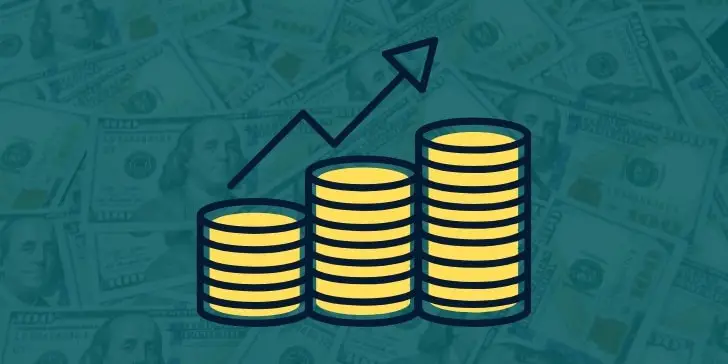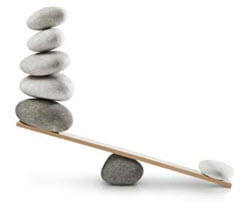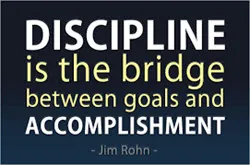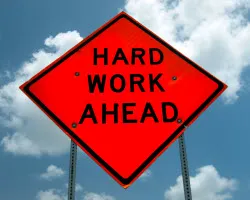
How much do Forex traders make per month? What is the monthly earnings potential of the average Forex trader? If you’re reading this article, you’re probably fairly new to Forex trading, so I don’t want to misguide you.
In fact, I’m going to tell you some hard truths that you probably don’t want to hear, but they are absolutely necessary to learn if you ever want to become a successful Forex trader. Your initial reaction may be discouragement, but there is a light at the end of the tunnel.
Please fight the urge to roll your eyes and move on to something more uplifting. Sometimes the truth hurts, but I will absolutely guarantee that if you don’t listen to what I’m about to tell you, you will NEVER be a successful, long-term Forex trader.
So how much do Forex traders really make per month?
This question is a little misleading for a couple of reasons:
- Most Forex traders are not profitable
- No profitable trader in any market makes the same percentage of profit each month
These are the questions you NEED to ask:
Why are most Forex traders unprofitable?
Despite what you may have heard about how easy it is to make money in the Forex market, the truth is that most traders fail. It is also true that you will probably fail at trading, but you don’t have to. The real reason traders fail is probably not what you think.
This is why traders actually fail:

Greed
Most new Forex traders have unrealistic profit expectations. They think it will be possible to make 25% – 50% or more month to month. They have dreams of turning their small account into a very large account in just a few years.
This is totally unrealistic. If it were possible we would all be doing it. Most successful traders make a much lower average monthly profit (3%-7% is common). If you’ve averaged 10% or better for more than a year, you’re a rockstar in the trading world.
Take this into consideration:
If you could sustain a 10% average monthly gain, you would more than triple your account every year.
By averaging 6%, you would more than double your account every year.
Starting with $5,000, and averaging only 3% per month, your account would grow to over $170,000 in 10 years.
Warren Buffet became a billionaire trader averaging only 30% per YEAR!
I’m not saying it’s impossible to make 25% or more in a month. I’ve done it, and many others have done it. I’m saying its impossible to MAINTAIN such a high average monthly gain. In order to shoot for such a high goal, you will be pressured to take bad trades, overtrade, and overleverage (which brings me to my next point).

Overleveraging
Poor money management is one of the worst account killers for new traders. This goes back to greed, because traders typically overleverage while shooting for unrealistic profit targets.
You should be risking a small percentage of your account on each trade, and you should be risking the same amount on each trade. I recommend never risking more than 2% per trade. Many successful Forex traders risk 1% or less per trade, and some very successful and experienced traders risk 3%.
Risking more than a small amount per trade is a death sentence for your trading account because all trading systems go through periods of drawdown. If you’re risking too much during one of these periods, you will, at least, wipe out much of your progress, if not completely wipe out your account.
Consider these two examples:
If you lost 10 consecutive trades, risking 2% per trade, your account would be down about 18%. You would need to earn about 22% of the remaining account just to get back to your starting balance.
If you lost 10 consecutive trades, risking 10% per trade, your account would be down by more than 65%. You would need to earn nearly triple the remaining account (187%) just to get back to your starting balance.
Not only does responsible money management help preserve your capital during losing streaks, it also helps to keep you trading your edge mechanically. That’s because losing 1% or 2% on a trade does not sting nearly as much as losing 5%, 10%, etc….
It’s easier to deal with the losses, psychologically speaking. You’re more likely to pull the trigger on the next trade, and let your edge work itself out over time. And that’s exactly what you need to do, if you know you have a profitable trading method working for you.

Insufficient Testing
I cannot stress this point enough. Testing is the backbone of a successful trading program. Most new traders are too impatient and undisciplined to thoroughly test new strategies. I think this, again, goes back to greed, because we all want to fire our bosses as soon as possible. You want to get that account snowballing quickly, but this is a costly, rookie mistake.
The problem is that, without sufficient testing of your trading system or any new trading setup, you’re not going to know how it will hold up during changing market conditions. You need to know if your trading system can stay profitable through increasing/decreasing volatility, growing/shrinking average daily range, impactful news events, etc….
I would not even consider a new trading strategy unless it had proven itself to be profitable after, at least, a couple hundred backtesting trades – either through my trading platform or using a backtesting software, such as Forex Tester 3.
Next, I would forward test (with a demo or micro account) the new strategy for, at least, a few months. The more time you spend doing this the better off you will be down the road because you will have absolute confidence in a system that has proven to be profitable over time.
Knowing exactly what your system is capable of, and proving to yourself that your trading system is profitable over months or (preferably) years worth of different market conditions will go a long way in helping you to mechanically trade the edge that your system gives you – even when you’re experiencing a losing streak.

Lack of Discipline
I’ve mentioned discipline a few times already, and it’s an import factor in profitable trading. It’s another psychological aspect of trading that can either make you or break you. Most new traders lack discipline in every aspect of their trading, from testing to execution.
It takes discipline, as well as patience, to properly test a new trading strategy. Most traders don’t have the discipline to do any manual backtesting at all. They simply learn a new trading method, and demo trade it for a week or two, or worse, they go straight to live trading.
It takes discipline to keep trading when you’re losing. If you’ve done your due diligence, then you already know for sure that you’re trading a consistently profitable trading system. With discipline, you will be able to keep pulling the trigger on the next trade and let your edge play out over time.
Sometimes you just have a bad feeling about a trade, although it meets your criteria. It takes discipline to mechanically trade every setup that comes along, but it’s a must. As soon as you start trading subjectively, you’ve abandoned your edge and you’re gambling.
Note: There is limited room for some subjectivity in some aspects of trading when you become much more experienced, but you should strive to trade as mechanically as possible even then.
Lack of discipline can also lead you into catastrophic behaviors, such as overleveraging (which I mentioned above) and revenge trading. Revenge trading is when you re-enter the market because you’re trying to earn back money that you’ve just lost – not because your trading system has provided another quality entry trigger.
Overtrading could be mentioned in the same breath. Successful, disciplined traders trade less, because they only take the best trade setups. They have the discipline to wait for the market and their trading system(s) to provide them with quality setups, rather than trying to force bad setups to meet some unrealistic profit target.

System Hopping
If you’re a new Forex trader, it’s absolutely necessary to find a consistently profitable trading system to start testing. To date, I’ve tested over 100 trading systems, and only 3 of them were profitable! Day Trading Forex Live is the only one that I can recommend for Forex traders.
Note: Read my full review of this trading system to see if it will fit your trading style and schedule.
If you’ve been trading for a year or two, the truth is that you may have already traded a profitable trading system. You just were not confident enough in it, or disciplined enough to let its edge play out over time.
You probably didn’t test long enough, started trading your hard earned money, lost a bunch of it, blamed the trading system you were using, and moved on to the next system. This is a constant, destructive cycle that a large majority of unsuccessful traders are trapped in.
There is no “holy grail” in trading. The point is to find a system that makes sense to you, and test it to see if it actually works. Just as importantly, you need to test it to prove to yourself that it will be profitable in the long term.
You’re looking for something that will provide you a verified edge in the market. You need to have an unwavering belief in the trading system that you are using. Once you do, you simply have to continue to trade the edge that your system provides for you with discipline.
Many traders unwittingly give up on profitable trading systems because they don’t trade them long enough, or with enough discipline, to let the edge work out for them. Even the best traders in the world lose lots of trades, but they have the discipline to let their edge play out.
What is a realistic average monthly profit expectation for a successful trader?

This question is more in line with the way you should be thinking, although its answer may be just as discouraging: It depends on the trader, their trading system, the market, etc….
Successful traders simply trade the edge that their trading system(s) give them, and take what they can get. They don’t set goals and they don’t force trades to meet those goals.
A really good year for a successful trader might look like this:
January +5%
February -2%
March +9%
April +12%
May +3%
June +9%
July +15%
August +20%
September +7%
October -4%
November +5%
December +5%
A trader with this record, if no money was withdrawn from the account along the way, would have earned over 120% – more than doubling their starting balance! Their average monthly profit percentage would be 7%.
Even as I’m writing this I can picture the amateur traders saying to themselves, “That’s not enough! I’ll never be able to do this for a living at that rate.” That is greed and impatience doing what they do to every inexperienced trader.
You could make more than what is depicted in the example above, but if you don’t change your attitude and expectations, you will most likely make much less. Instead of asking yourself, “How much can I make per month as a Forex trader?” you should be asking yourself, “Am I willing to do what it takes to become a successful Forex trader?”




Hi there,
I just want to thank you for taking your time to educate us newbie (& losing) traders.
I enjoyed your ebook “How to Choose Better Support and Resistance Levels“.
I like your site, (not that its particularly important, but the font you use in your articles and site are very nice. I look forward to wading through your articles, and give your recommended trading systems a try out.
Regards.
J
Thanks for the kind words, J! I’m glad you enjoyed the eBook. Let me know if you have any questions.
Hi Chris,
I’m new to forex trading & was thinking of start live trading with $500.
I will add $50 to my account every month.
Target monthly return 6 %
what is your suggestion?
Hi Sen,
Thanks for commenting! Are you using a profitable trading system? If you’ve got a good trading system, targeting an average of 6% per month is certainly realistic – especially if you’re risking 2% per trade.
Since you’re just starting out, I wouldn’t recommend 2% per trade, though. You should risk the smallest amount that your broker will allow, and slowly build up your risk once you prove that you’re profitable.
Some people would tell you to demo trade first, which is actually not a bad idea. However, I find that you gain more realistic experience risking real money – even if it’s a small amount. It’s just different psychologically.
Your plan sounds good to me. Just make sure you’ve got a good trading system, and follow the rules faithfully. Good luck!
Hi thank you for your article
No problem. Thanks for reading.
Hi Chris
Thank you for the helpful article.
But I’m a little bit confused about the realistic monthly returnees, if I could average 6% monthly (from the comment above) and it’s certainly realistic, as you replied, isn’t this more than 50% annual average returnes? I thought this is impossible, specially doing it constantly!
Could you please clarify, thank you.
Hi Sara,
Thanks for reading. I never said making 50% annually is impossible. I know for a fact that it’s possible.
Hi Chris hope you can help me on this one , have you aver seen traders who actually trade using a 1:1 risk reward ratio .. of course witha hit rate above 50% .. and well in the en d they are actually profitable ?? or succesful traders always use a higher risk to reward ratio?
Sure. That’s essentially what scalpers do. I know some scalpers are successful, although I haven’t personally met or spoken to any.
In my experience, it’s best to shoot for the highest reward to risk ratio that you can consistently achieve with your trading system. In DTFL, we target 2:1 reward to risk, although we sometimes close trades early for various reasons.
I’ve successfully traded other systems where the reward is targetted dynamically. If you can make a static 1:1 work for you, go for it. I haven’t been able to.
Hay Chris,
How is it going?Happy New Year in advance.Wish you a prosperous and fruitful year ahead!Have you heard of compound interest where monthly return is being accumulated over time?Well,here is my anticipation for the new year 2018.
Starting with an account balance of $500,30% monthly return.That will be 500 x 1.3^12 = $11,649. Is it achievable?
Hope you will suggest good tips or advice.Stay healthy and happy trading! Cheers !
Talk to you soon!
Best regards,
Jason
Hey Jason,
Sorry for the late response and thanks for the kind words. It’s been busy over here due to the holidays.
I’ve heard of compounding returns, of course. That’s the goal of most traders. However, shooting for 30% per month is unrealistic, IMO.
Most new traders would be lucky to make 30% per year and keep it. Sure you can make 30% in a month by taking too much risk. In fact, when I first started, I nearly doubled my account in a month on several occasions. I gave it all back, though.
If you can’t hold on to it, what’s the point? My advice is that you learn to trade first. Don’t focus on returns as much in the beginning. See what you can make risking 1% – 2% of your account per trade or less (start with a much lower percentage while practicing).
If you find that you can make consistent (I mean over months and years) returns, start adding money to your account whenever you can. You can even get other investors to help you fund a significant account as long as you can prove that you make consistent returns.
Just my 2 cents. That’s probably not what you wanted to hear, but I’m trying to help you skip those rookie mistakes.
Hi Chris, thanks for this article
It really wake me up to prevent most rookie’s mistake, and I hope I can do those points you mentioned above over time.
I’ve also read couple time that to get 10% profit/per month on consistent basis would be considered great even for pro trader.
But I wonder about the calculation, hope you can make this clear for me :p
– Let’s say I take 1 trade a day, so about 20 trades a month
– My risk to reward ratio for every trade is 1:2
– Every trade I risk 1%, so for every winning trade I get 2% profit
– My average winning percentage is only 50%
– I’m not compounding my profit, so my 1% risk towards initial capital is always the same amount
– I win 50% (10 trades) and lose 50% (10 trades)
– For winning trades I get 10 x 2% = 20%
– For losing trades I suffer 10 x 1% = 10%
– At the end I got 20%-10% = 10% profit that month
So my question is why is it hard even for pro trader to get more than 10% a month? And months with 2 digit profit % is not sustainable for the long run, maybe only 1-3 months per year (my understanding from your article).
For my example, I think my risk ratio 1:2 is moderate, risking 1% every trade is average, 20 trades a month is moderate between daytrader and swing trader, and 50% winning percentage is quite low for pro trader (I think pro trader should be on 60% – 70% winning percentage) and it still produce in ideal calculation roughly 10% a month.
So even though I’ve read couple times about ‘even pro trader hardly to get 10% a month consistently’ I still don’t understand the thought process behind it.
Please pardon me if I have weird logic on my simple calculation because I’m a newbie and still do paper trading.
It would be great if you can share your two cents about it.
Thanks in advance Chris ^^
Hey Adam,
I’m glad you’re finding this site useful and thanks for your question.
A consistent 50% strike-rate with a 2:1 reward-to-risk ratio is as close to the “holy grail” as you can get, IMO. Most experienced traders who use a 2:1 reward-to-risk ratio (high reward-rate) trading system have a strike-rate closer to 40%, in my experience.
Your strike rate can generally go up if you use a lower reward-to-risk ratio (high strike-rate) trading system because it’s easier to be right for a shorter amount of time.
I’m not advocating a high strike-rate system, though. In fact, I use a high reward-rate system myself. There are definitely pros that achieve 60%-70% (I’ve even seen 80%) with high strike-rate systems, but the profit percentage probably wouldn’t blow your mind.
Another thing you have to keep in mind is that typically when traders are bragging about high strike-rates, they are including small wins and early exits (not all of those wins were a full 2:1 profit target hit).
Lastly, 20 good, qualified trades in a single month are more than most good trading systems will produce. You don’t want to force yourself to take a trade every day. You have to take the qualified trades as they come. Sometimes that’s 1 or 2 in a week. At times, you may take multiple trades in a day.
The key is to be consistent. You need to try to take every qualified trade that comes along according to your trading plan but not more. New traders usually trade way too much. Experienced traders stay out of the market until the moment is just right. That means fewer but better quality trades and more profit.
The truth is that when you consider trading with your own hard-earned cash, brokers, fees, and everything else that you have to deal with as a trader apart from your trading system (and that’s assuming you’ve actually got a profitable trading system), you’re lucky if you end up with a slight edge at all. But a slight edge is all it takes if you’re persistent.
I don’t want to discourage you. Maybe you’ll beat the odds. If you’re not successful right away, though, just remember what you learned here. Be happy with small, consistent gains and build from there. Good luck!
Woww thank you so much for your reply Chris. I wasn’t expecting such a detail answer, I’ll keep in mind. Really appreciate it Sir!
No, you didn’t discourage me at all, instead I think it’s better to know bitter truth about trading world ASAP before I walk further. And the deeper I’m into this world the more I realise that I know nothing haha.
My focus for now isn’t profit but to protect my capital from losing. So which one is better in your opinion
1. paper trading until at least I can protect my capital
2. or open micro account so I get the taste of real tension (if it go into zero, it’s OK for me as I’ll take it as tuition fee)
Thanks again Chris, it’s so kind of you to spare your time answering newbies like me.
Wish you the best ^^
No problem, Adam. Glad I can help. To answer your question, you need a good trading system and trading plan first and foremost. If you don’t have those, you’re just gambling.
Maybe you already have a great trading system and a solid trading plan that you can stick to. If so, you should definitely demo trade (or paper trade) it first for a couple of reasons. The main reason is that you need to build confidence in your trading system and trading plan so that you can keep pulling the trigger when the drawdowns come (and they will come). No system is impervious to it.
That being said, you should start trading a small, live account (using the smallest trade/lot size your broker allows) as soon as you can. No amount of practice can prepare most people for risking their real, hard-earned cash. That’s usually when the psychological mistakes start happening.
Once you’re consistently profitable trading small amounts of your real money, gradually increase your trading size to 1% or 2% at the most. Some people risk more per trade, but I wouldn’t recommend it. Risk too much and you’ll wipe your account out during your first drawdown.
Hope that helps. Good luck!